| 1. Both Mayor Rahm Emanuel and Mayor Richard M. Daley embraced the idea that it’s a moral imperative to close chronically low-performing schools and replace them with new schools that promise to be better or send displaced students to higher-performing schools. As mayor, will you support closing chronically low-performing schools? | ||
 |
Dorothy Brown | No |
 |
Gery Chico | Yes |
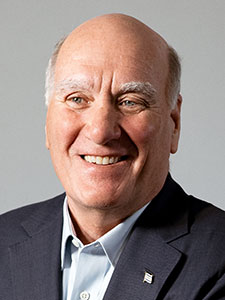 |
Bill Daley | Did not answer yes or no |
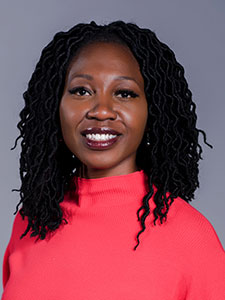 |
Amara Enyia | No |
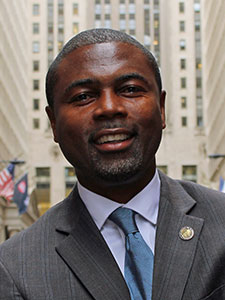 |
LaShawn Ford | No |
 |
Ja'Mal Green | Did not respond |
 |
Jerry Joyce | No |
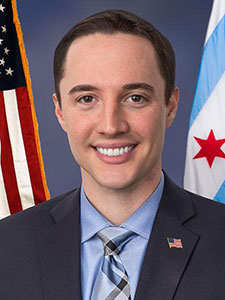 |
John Kozlar | No |
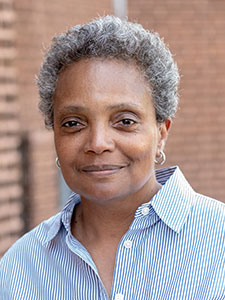 |
Lori Lightfoot | Did not answer yes or no |
 |
Garry McCarthy | Did not respond |
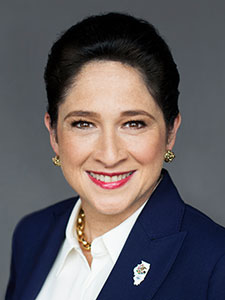 |
Susana Mendoza | Did not answer yes or no |
 |
Toni Preckwinkle | No |
 |
Neal Sales-Griffin | Did not respond |
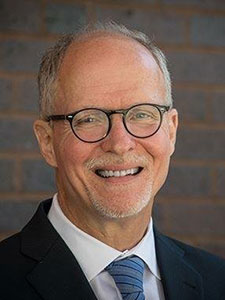 |
Paul Vallas | No |
 |
Willie Wilson | No |
| 2. Chicago Public Schools has lost more than 42,000 students since the 2013 closing of 50 under-enrolled schools. Those 42,000 missing students could fill 70 average-sized Chicago schools. As mayor, will you support closings schools that are more than 50 percent under-enrolled? | ||
 |
Dorothy Brown | No |
 |
Gery Chico | Yes |
 |
Bill Daley | Did not answer yes or no |
 |
Amara Enyia | No |
 |
LaShawn Ford | No |
 |
Ja'Mal Green | Did not respond |
 |
Jerry Joyce | No |
 |
John Kozlar | No |
 |
Lori Lightfoot | Did not answer yes or no |
 |
Garry McCarthy | Did not respond |
 |
Susana Mendoza | Did not answer yes or no |
 |
Toni Preckwinkle | No |
 |
Neal Sales-Griffin | Did not respond |
 |
Paul Vallas | Did not answer yes or no |
 |
Willie Wilson | No |
| 3. Since closing 50 schools in 2013, the city has lost 42,000 students, but also opened 38 new schools and/or constructed new buildings. As mayor, will you support opening new schools and/or constructing new building in years when overall enrollment has declined? | ||
 |
Dorothy Brown | No |
 |
Gery Chico | Yes |
 |
Bill Daley | Did not answer yes or no |
 |
Amara Enyia | No |
 |
LaShawn Ford | Yes |
 |
Ja'Mal Green | Did not respond |
 |
Jerry Joyce | Yes |
 |
John Kozlar | Did not answer yes or no |
 |
Lori Lightfoot | Did not answer yes or no |
 |
Garry McCarthy | Did not respond |
 |
Susana Mendoza | Did not answer yes or no |
 |
Toni Preckwinkle | Yes |
 |
Neal Sales-Griffin | Did not respond |
 |
Paul Vallas | No |
 |
Willie Wilson | Yes |
Candidates' extended statements
Dorothy Brown
The moral imperative is to raise the level of educational performance at all neighborhood schools. They are a place for children and families to strengthen ties to each other and create a sense of belonging. Neighborhood schools build communities based on the simple fact that residents live near each other. Other schools are exclusive and separate children into winners and those who are left behind. Neighborhood schools do not sort kids. They bring families together based on the best interest of all children, regardless of their background.
Neighborhood schools are learning and community centers. By investing in neighborhood schools, the City can attract families back to under populated areas and restore vitality to the community. By committing resources to neighborhood schools, the City will jumpstart community revitalization, and businesses will soon follow, boosting the local economy.
No doubt, some neighborhood schools have suffered from declining enrollment due to structural issues, such as high poverty and unemployment rates, serious health conditions, excessive crime rates, and lack of affordable housing. The City should not surrender these communities to neglect. By creating great neighborhood schools, Chicago can increase enrollment and give all our kids a pathway to a bright future.
Gery Chico
Regarding question 2, I will seriously review the need to consolidate or close severely under-enrolled schools, but only with community input. The decision to close a school would be made on a school-by-school basis. We cannot let arbitrary metrics dictate which schools to close.
Extended statement: The decision to close a school is a painful one because schools serve more than just their students: they are anchors of entire communities. As Mayor, I would listen to what the students, parents, and community members think the best solution is, and work with them to make sure we exhaust all options before we close a school. This process would be transparent, with a clear timeline for consideration, and if the decision is to close a school, there would be an agreed-upon transition plan for students, teachers, and administrators.
There are some schools in Chicago with so few students that it is not in their best interests academically or socially to stay there when they could be getting a better education at a sufficiently enrolled school with more resources. The same is true for schools that are chronically underperforming. We cannot let students languish in schools that will not prepare them for success.
I will always look to build schools or add buildings in communities that have been under-resourced. A great example is the “super school” plan for a new high school in Englewood that will bring top quality facilities to a neighborhood whose current schools are too old and too small for their students.
Bill Daley
1. This is not a yes or no question. There are legitimate reasons to close schools: extreme under-enrollment, poor physical condition and chronically low performance despite efforts to help schools improve. If I am elected, I will establish a community-driven process to open and close schools. We will hold all schools, including neighborhood and charter schools, to the same standards. We need to honor parent choices.
2. Again, this is not a yes or no question. Closings depend on performance, enrollment and school condition. We will go neighborhood-by-neighborhood and ask the community what kind of schools they want. Our goal is to give every family more quality school options close to home while maintaining the right of parents to apply to schools across the system.
3. I have no plans to open any new schools in the short term. New schools will be driven by neighborhood need and community input.
Amara Enyia
These questions have loaded language (i.e. "chronically underperforming", "under enrolled") without addressing the reasons why schools 'underperform' or why CPS' has "under enrolled" schools (Chicago's overall population loss).
That said:
1. No. New schools mean nothing if we do not invest in the students. Investments in the resources that students need (SEL, licensed social workers, etc) will improve student outcomes. Also, investing in teachers and support staff they need to be able to do their jobs. Moreover, these same investments need to happen in the neighborhoods that are the home for these schools.
2. No. Research showed that students who were displaced from 'underutilized' schools actually did worse in their receiving schools (in addition to the fact that CPS didn't honor its promise of sending kids to higher performing schools). We need to completely reimagine education and what it looks like even in a landscape where student population is less than school capacity. And CPS need(ed) to be proactive with understanding demographic trends instead of using reactionary tactics like school closings that were poorly planned and executed.
3. No. Not if the analysis of where these buildings are built and which communities are served is not done with an equity lens. (i.e. CPS closing four Englewood high schools and having to be forced to allow existing students in Englewood to attend the new school). Transparency about where these capital expenditures are happening and who is being served, is key. Moreover, we definitely do not need to be expanding charter schools as part of this process (which is what CPS did in the past).
LaShawn Ford
Chronically low-performing schools are often synonymous with chronically underfunded schools. I believe it is a moral imperative to keep all of our schools open. I will work hard to ensure that no more school closings occur under my watch. School closings put students at risk, disrupting their education, making transportation and therefore attendance difficult, and escalating their exposure to violence.
Charter schools and in some ways selective enrollment schools, have created an environment where neighborhood schools are sometimes seen as a selection of last resort. This does not have to be the case. I believe strongly in re-modeling existing CPS neighborhood schools. Chronically low-performing schools do not need closing they need scientific evaluation, holistic practices, and caring attention. Some schools need repurposing, such as additional room for mental health services and other programs, and innovative ideas the students, parents, and the teachers desire, and still other neighborhoods require new schools such as the new comprehensive high school in Austin that I have worked hard on as state representative.
But most of all I believe that if we work on a justified sense of safety, affordable housing, and revitalization (without gentrification) many Black and Brown families who were displaced to the South and West Side suburbs will return to this city and schools that are more vibrant and alive than ever.
Ja'Mal Green
Did not respond
Jerry Joyce
1. No. It’s a moral imperative that every child in Chicago has access to a quality public education. We should focus on ensuring that every school in Chicago is safe, clean and high-performing. Some schools may require closing, but these decisions cannot be made in a vacuum and the fact that a school is low-performing should only be one factor.
2. No. Closing a school should not be the first response to under-enrollment. We should focus on what is driving the loss of students and this analysis should figure prominently into the overall strategy. We have to take a broader look at the demographics of the surrounding area and engage in vigorous conversations with parents and community members. An elected, representative school board, I believe, would promote accountability in these neighborhood-driven conversations.
3. Yes, BUT given the extreme financial challenges facing our city, any decision on new construction needs to take into account all available options including refurbishing existing buildings. We need to be mindful that under-enrollment in one school doesNot mean there can’t be overcrowding in others. So decisions on whether to build, refurbish or even close must be made on a case-by-case basis. We have seen the consequences that come from making blanket promises with a system as complex as CPS. The only promise should be to do what's best for students and their families.
John Kozlar
1. No. Low-performing schools should be revamped or re-purposed - not closed.
2. No. Schools that are under-enrolled should be revamped or re-purposed - not closed.
3. If we need more space for students, then adding new schools will be an option. However, if enrollment is down, we should invest more into our teachers and children, so that they can be properly equipped to teach and learn. We need to focus on nurturing our youth at a young age, so that they can be prepared as they enter adulthood.
Lori Lightfoot
1. Closing a school for “chronic low-performance” says that we have failed. It means we have failed to help children learn, failed to save a community anchor, and in recent cases has meant we failed to provide black and brown children with the good quality, stable educational environment they deserve. A Lightfoot administration will engage in a respectful partnership with parents, teachers, and other stakeholders to support and maintain clean, safe, quality public schools for every student in every neighborhood. In this collaborative environment, a closure would be the very last resort after all other options have been exhausted and after a transparent and engaged dialogue with all stakeholders. I would never agree to such a hard and fast rule that does not allow for nuance or community input to help turn a school around or give our kids the best quality public education in their neighborhood.
2. As with the first question, I would not commit to a rule that does not allow for community engagement in these critical decisions. Of course, our children should learn in an environment where they can enjoy a full range of educational experiences and resources. Those objectives become challenging to meet where there is material under-enrollment. However, our first reaction should not be to close those schools, which places the burden of failed economic development and disinvestment on our students and often on black and brown students in particular. Instead, we must increase enrollment by addressing the root causes of flight and working collaboratively with all stakeholders to turn our schools around.
3. As with the first two questions, I would make critical decisions about our schools collaboratively with stakeholders. Every student in every neighborhood deserves a safe, clean, quality school nearby; however, this is not the case in every neighborhood right now. I would work with parents, students, teachers, and other stakeholders to make this vision for a more equitable CPS a reality.
Garry McCarthy
Did not respond
Susana Mendoza
1. We cannot simply close schools because they’re under-performing. Our students deserve fully resourced neighborhood schools where they can achieve their maximum potential.
2. I’ve committed to at least a two-year moratorium on school closings until we understand everything it takes to thoughtfully and responsibly make decisions of that magnitude that impact neighborhoods across the city.
3. A one-size fits all approach to school capacity is short-sighted. We have multiple communities throughout the city with tremendous demand for seats due to overcapacity, while others face under-enrollment. We need to work with parents, teachers, local residents and LSCs to develop the right solution for their school and community. And we have to engage them directly and be transparent about the process.
Toni Preckwinkle
1. No. The schools labeled as "chronically low-performing" are in the same neighborhoods on the South and West sides subject to massive disinvestment, over-policing, the destruction of affordable housing, and Great Depression-era unemployment. The answer, then, isn't to take even more from the same folks. Instead, my first steps as mayor will be investing in schools so they have the things they deserve based on the elements of the state's new evidence-based funding formula: additional social workers, nurses and school counselors; lower class sizes; early childhood education; and the resources and supports for a broad and rich curriculum. And I will address the structural issues that impact what happens in schools: build additional affordable housing, expand job opportunities for people outside of downtown, and criminal justice changes that make it possible for people to make it on the outside.
2. No. Rahm's school closures were an abject failure, as a recent University of Chicago report made clear. The school closures unnecessarily harmed students and destroyed community centers, and demonstrated a key problem with policy by formula - if the formula elements change, the outcomes change, too. Those same so-called underenrolled schools under CPS' numbers would be optimally used if we made tweaks to the formula, such as lowering class sizes, especially in the early grades, and expanding the sustainable community schools model to provide additional wraparound supports for students, healthcare access, and adult education opportunities. The problem with school closures is the austerity they forced on only some residents in Chicago. To be clear, the decline in students in CPS is almost entirely attributed to the decline in Black students. Their families were pushed out of the city by unaffordable housing, a lack of jobs, and regressive fines and fees. And in the past year, that pushout spread to Latino families, as those same factors and the Trump Justice Department's immigration enforcement forced untenable choices on greater numbers of people. The city's school enrollment and population are linked. Closing schools doesn't fix either.
3. Yes. We can't foreclose the need to build new schools to replace ones that are in need of replacing. But I do commit to few important ideas. First, I dramatically favor investing capital in existing schools to make sure that they have what they need: engaging learning environments, technology infrastructure, appropriate climate controls so students aren't sweltering or freezing, and health and safety repairs that ensure our children don't get lead poisoning or mold poisoning at school. Second, we need a freeze on new charter schools, which only made the enrollment issues worse as more schools served fewer students, thereby forcing a hunger games scenario on children and families. Third, the new schools over the last ten years have been predominantly built for selective enrollment students who are disproportionately white and higher income. That's an inequity that must end. Test scores should not determine the facility you learn in. Finally, I commit to having a capital plan that is an actual plan rather than a series of political favors to be doled out. School repairs should be allocated on basis of need, not based on access.
Neal Sales-Griffin
Did not respond
Paul Vallas
1. No. I support transforming underperforming schools by improving those schools through better programming, or in some cases introducing a different and proven school model.
2. Anyone who claims they are never going to close a school due to under-enrollment is pandering to the public. My priority will be to do my best to avoid school closings by bringing programs to under-performing schools that will result in increased student enrollment. We should never close a performing school, but rather we should determine ways to get more students to attend. This includes expanding access via free or subsidized transportation. With regards to closing under-enrolled schools that are also underperforming, we should work to offer more programming that encourages neighborhood families to send their children to the schools. When I was CEO of CPS, to revitalize under-enrolled and under-performing high schools I placed magnet-type programs in the schools to make those schools more attractive.
3. No, except in situations where buildings are environmentally unsafe or substandard. I don’t support the current administration’s strategy because I don’t think there is a strategy – unless that strategy is to drive out those children most in need and with the fewest high quality education options. If that is not the intent, it is certainly the outcome.
Willie Wilson
1. No. This question does not really lend itself to a yes or no answer as the decision to close a school is a highly complex one that needs many bits of information as well as, most importantly in Dr. Wilson’s opinion, the input of the community and an elected school board. The decision to close a school should not be solely in the hands of the mayor but a collective of citizens that includes professionals as well as parents of the community in question.
2. No. As above, the percentage of "filled desks" is but one parameter in such an important decision. However there are other parameters including questioning if the size of school, can it be appropriately downsized and remain open?
3. Yes. All 50 schools should NOT have been closed down and many need to be reopened. Quoting overall numbers of desks and students is not the way to determine a school system that acts as a critical anchor to each community.
Extended statement: Dr. Wilson would involve the communities with the board of education and an elected school board to determine which of the 50 schools closed by Rahm should be reopened or rebuilt and like other departments, participate in forming the direction of all major decisions. Community based parent organizations in conjunction with an elected school board and the CPS staff will determine the proper number, size, location and staffing of each school and each community. This includes curriculum design. He also expects that community driving issues such as "prayer in school" would be properly discussed and decided jointly by the educators and the parents, together.
"Chicago is one the greatest cities in this nation but for many people on the South and West side of Chicago it seems more like two cities, a shiny, prosperous downtown and distant communities stripped of their schools, hospitals, clinics and resources that are necessary to stabilize healthy communities. Like a hillside stripped of it’s plants, the soil of these communities is surely eroding."